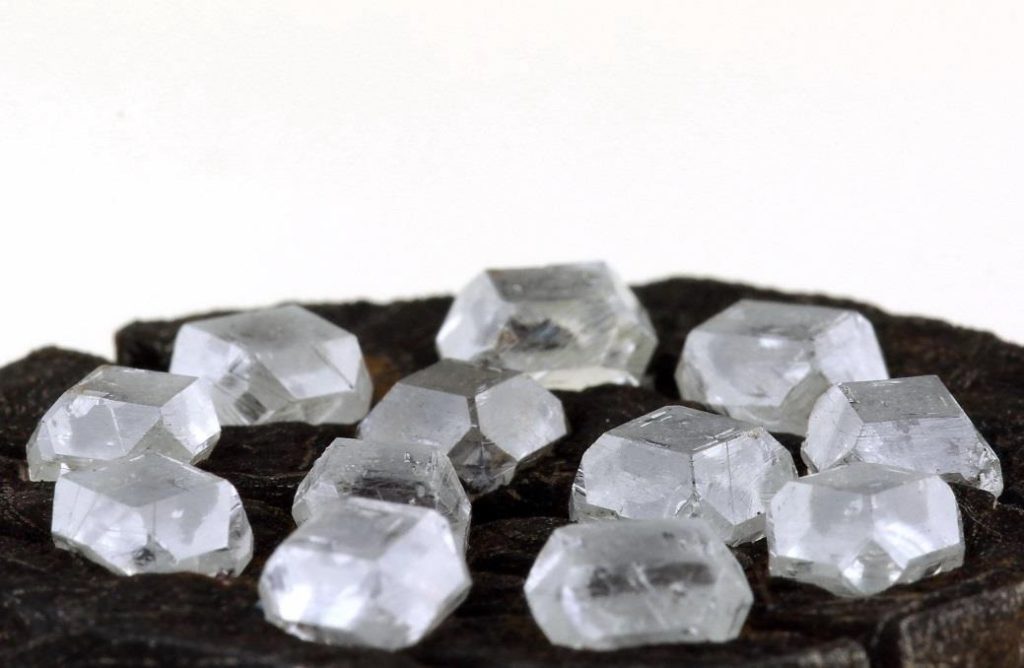
Diamond is one of the hardest materials on Earth, as its super-strong carbon lattice structure makes it incredibly resistant to compression.
Theoretical predictions suggest there is another structural form of carbon out there that could surpass diamond in hardness – the problem is, nobody has ever been able to make it.
Now, simulations performed using the fastest exascale supercomputer in the world are helping researchers better understand the stability of diamond at very high pressures. These simulations are also helping create new potential synthesis methods that could one day see this “super-diamond” become a reality. The research is published in the Journal of Physical Chemistry Letters.
Is BC8 diamond 2.0?
The basis for this hypothetical “super-diamond” is the eight-atom body-centered cubic (BC8) crystal structure. BC8 is a tetragonally bonded structure that packs atoms even more efficiently than the face-centered cubic (FCC) structure of traditional diamond. BC8 phases for both silicon and germanium have been synthesized at high pressures – and successfully recovered to ambient conditions – but the same is not true for carbon.
“The BC8 phase of carbon at ambient conditions would be a new super-hard material that would likely be tougher than diamond,” said senior study author Ivan Oleynik, a physics professor at the University of South Florida (USF).
“The BC8 structure maintains this perfect tetrahedral nearest-neighbor shape, but without the cleavage planes found in the diamond structure,” explained Jon Eggert, study co-author and chief scientist at the Lawrence Livermore National Laboratory (LLNL) High Energy Density Science (HEDS) Center. Eggert agrees with Oleynik that “the BC8 phase of carbon at ambient conditions would likely be much tougher than diamond.”
Theoretical predictions indicate that a BC8 phase of carbon is possible – and that it would be around 30% more resistant to compression than diamond – but so far scientists have been unable to produce it in a lab.
One step closer to lab-grown super-diamond
For this new study, the team was able to carry out multi-million atomic molecular dynamics simulations on Frontier, the fastest exascale supercomputer in the world. These simulations were designed to investigate the extreme metastability of diamond at very high pressures, in conditions that well-exceeded its known range of thermodynamic stability.
This new research was possible thanks to the recent development of very accurate machine learning models for interatomic potentials. These simulations can describe interactions between individual atoms with unprecedented accuracy, even when considering very high-pressure and high-temperature systems.
“By efficiently implementing this potential on GPU-based (graphics processing unit) Frontier, we can now accurately simulate the time evolution of billions of carbon atoms under extreme conditions at experimental time and length scales,” Oleynik said. “We predicted that the post-diamond BC8 phase would be experimentally accessible only within a narrow high-pressure, high-temperature region of the carbon phase diagram.”
Want more breaking news?
Subscribe to Technology Networks’ daily newsletter, delivering breaking science news straight to your inbox every day.
The simulation showed that, at pressures above 10 million atmospheres and temperatures above 4000 Kelvin, the BC8 carbon phase is the most stable form of carbon.
The significance of this is two-fold, the researchers explain. Firstly, this explains the previous failed attempts to synthesize the elusive BC8 phase of carbon seeing as it is only stable under a very narrow range of temperatures and pressures. But it also allows for further predictions of viable compression pathways that might make BC8 synthesis achievable.
Based on their simulations, the research team has proposed a double-shock compression pathway for BC8 synthesis, which is currently being explored in further experiments at the LLNL’s National Ignition Facility. Their ultimate goal is to be able to synthesize a small amount of this BC8 “super-diamond” and then find a way to recover a seed crystal of the material back to ambient conditions.
Super-diamond could already be hiding in distant exoplanets
Investigating the properties of “super-diamond” is important, not just because scientists love it when there is a mystery to solve.
Astrophysical observations have discovered a number of carbon-rich exoplanets beyond our solar system. The ultra-high pressures in the interior of these planets may be enough to form diamond as well as the BC8 phase of carbon, the researchers believe.
“Consequently, the extreme conditions prevailing within these carbon-rich exoplanets may give rise to structural forms of carbon such as diamond and BC8,” Oleynik said. “Therefore, an in-depth understanding of the properties of the BC8 carbon phase becomes critical for the development of accurate interior models of these exoplanets.”
Reference: Nguyen-Cong K, Willman JT, Gonzalez JM, et al. Extreme metastability of diamond and its transformation to the BC8 post-diamond phase of carbon. J Phys Chem Lett. 2024
Source: technologynetworks